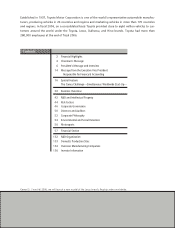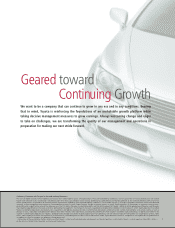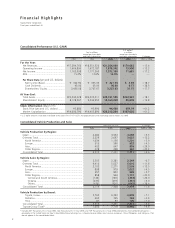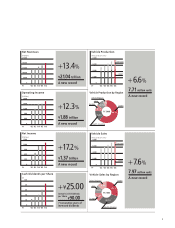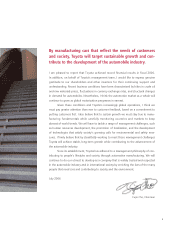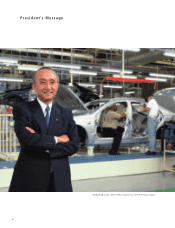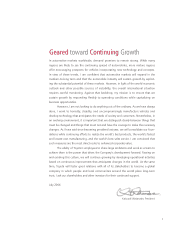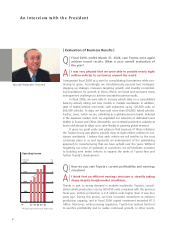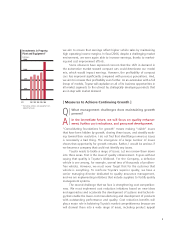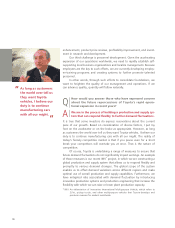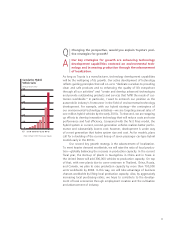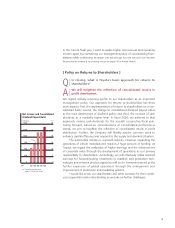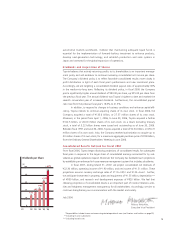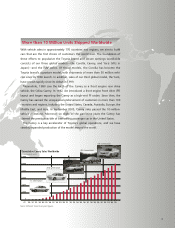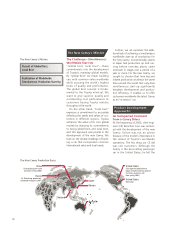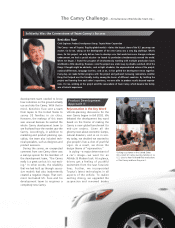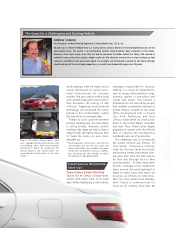Toyota 2006 Annual Report Download - page 12
Download and view the complete annual report
Please find page 12 of the 2006 Toyota annual report below. You can navigate through the pages in the report by either clicking on the pages listed below, or by using the keyword search tool below to find specific information within the annual report.
10
enhancement, product price reviews, profitability improvement, and invest-
ment in research and development.
Our third challenge is personnel development. Given the accelerating
expansion of our operations worldwide, we need to rapidly establish self-
supporting local business organizations and localize management. Because
employees are the key to such efforts, we are currently developing employ-
ee-training programs and creating systems to further promote talented
personnel.
In other words, through such efforts to consolidate foundations, we
want to heighten the quality of our management and operations. If we
can advance quality, quantity will follow naturally.
How would you answer those who have expressed concern
about the future repercussions of Toyota’s rapid opera-
tional expansion in recent years?
We are in the process of building a production and supply sys-
tem that can respond flexibly to further demand fluctuations.
It is true that some investors do express reservations about the current
pace of our growth. Based on consideration of diverse factors, I put my
foot on the accelerator or on the brake as appropriate. However, as long
as customers the world over tell us they want Toyota vehicles, I believe our
duty is to continue manufacturing cars with all our might. The reality of
today’s fiercely competitive market is that if you pause even for a short
break your competitors will overtake you at once. That is the nature of
competition.
Of course, Toyota is undertaking a range of measures to ensure that
future demand fluctuations do not significantly impact earnings. An example
of those measures is our recent IMV*project, in which we are constructing a
global production and supply system that allows us to respond flexibly and
promptly to various demand changes. The global scope of the system
enables us to offset demand variations across different regions and make
optimal use of overall production and supply capabilities. Furthermore, we
have mitigated risks associated with demand fluctuation by introducing
innovative production systems and production engineering that increase the
flexibility with which we can raise or lower plant production capacity.
*IMV: An abbreviation of Innovative International Multipurpose Vehicle, which refers to
SUVs, pickup trucks, and other multipurpose vehicles that Toyota develops and
produces overseas for markets worldwide.
As long as customers
the world over tell us
they want Toyota
vehicles, I believe our
duty is to continue
manufacturing cars
with all our might.
“
”
Q
A


